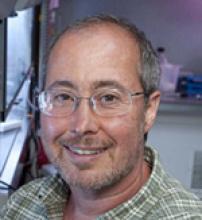Three researchers supported in part by NEI have been elected to the National Academy of Sciences, a nonprofit organization that advises the U.S. government on matters of science and technology. Election to the academy is based on continuing achievements in research, and is considered one of the highest honors a scientist can receive.
Ben Barres, M.D., Ph.D., is professor and chair of the department of neurobiology at Stanford University School of Medicine in California. With support from NEI grants (EY011310 and EY010257), Dr. Barres is investigating approaches to stimulate regrowth of the optic nerve. This nerve connects the eyes to the brain, and is known to break down in glaucoma and several other eye diseases. Dr. Barres’s efforts focus on myelin, a sheath around nerve fibers that is needed for normal nerve function but can also inhibit regrowth of damaged nerves. He recently identified a new molecule within myelin called sulfatide, which acts as an inhibitory cue for optic nerve growth.

David Heeger, Ph.D., is a professor of psychology and neural science at New York University in New York City. Dr. Heeger develops computational theories of brain function, and uses functional magnetic resonance imaging (fMRI) to test those theories and investigate the relationship between brain activity and behavior. In one of his current NEI-funded projects (EY022398), he is using fMRI to examine how the brain perceives color. This method could be applied to many other aspects of visual perception and to better understand the perceptual problems that occur in amblyopia, low vision, and some visual agnosias (impaired ability to recognize visual objects). In another project (EY019693), Dr. Heeger is using fMRI and behavioral measurements to test and refine a theory of visual attention-our ability to mentally focus on part of a scene while tuning out other parts. A better understanding of visual attention could lead to strategies for improving peripheral (side) vision, which becomes more critical when central vision is compromised due to diseases such as macular degeneration.
Gina Turrigiano, Ph.D., is a professor of biology at Brandeis University in Waltham, Mass. Her research addresses the many ways in which visual experience can shape visual development. For example, if the eyes are misaligned during childhood, the brain may favor one eye and ignore the other-a condition called amblyopia. Patching the favored eye for several weeks to months can help correct amblyopia, but this becomes less effective after about age 7, because the brain loses some of its ability to adapt. In an NEI-funded project (EY014439), Dr. Turrigiano seeks to understand the basis for this “critical period.” She is examining how visual system circuitry changes over time in a rodent model of amblyopia and whether manipulating these changes can extend the critical period.
The NAS has about 2,200 members who represent a host of disciplines, including biology, chemistry, physics, engineering and social sciences. Members serve on panels that are commissioned by Congress or federal agencies to address national scientific priorities and challenges, to help establish new research programs, or to evaluate existing programs. Each year, the academy membership nominates and votes in new members. Eighty-four new members were announced at the 2013 annual NAS meeting held in Washington, D.C., from April 27-30.